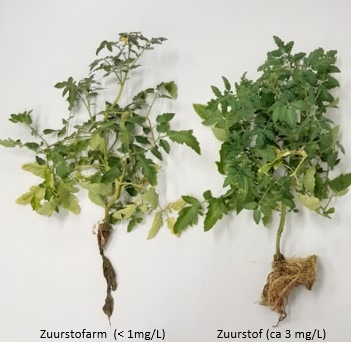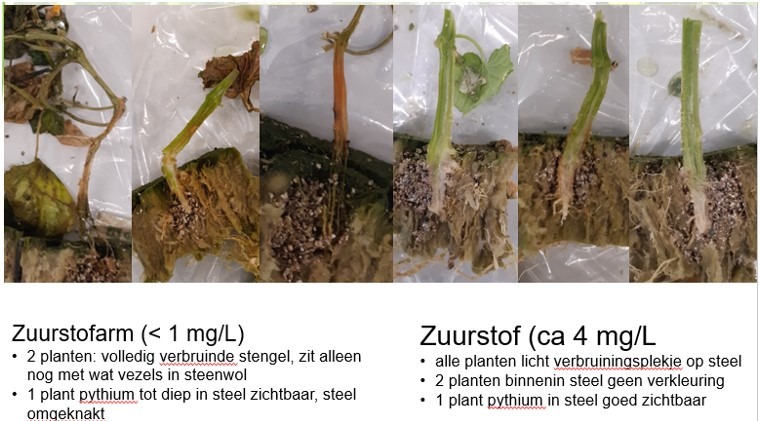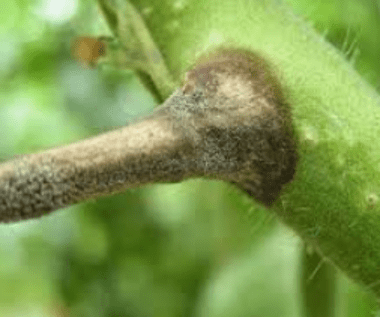In greenhouse vegetable cultivation, the oxygen concentration in the substrate plays a crucial role in ensuring healthy plant growth and optimal yield. A stable oxygen supply to the roots is essential. Low-oxygen conditions can lead to inactive roots, resulting in several negative consequences:
1. Reduced nutrient uptake – Due to decreased root activity, less nutrition is absorbed, which can hinder plant growth.
2. Reduced water uptake – Roots lacking sufficient oxygen lose their ability to absorb water effectively, putting the plant under stress, especially during warm periods.
3. Increased susceptibility to diseases – Inactive roots are more vulnerable to root diseases, such as infections caused by the fungus Pythium, which commonly occurs under low-oxygen conditions.
To visualize the effect of oxygen on plant resilience, trials were conducted with tomato and cucumber. The tomato plants were grown with their roots directly in a nutrient solution, while the cucumbers were first sown in pots, which were then placed in the nutrient solution. Pythium was added to all nutrient solutions. In half of the setups, air was bubbled through the solution, while in the other half, no aeration was applied.
Tomato
The low-oxygen conditions led to root damage in the tomato plants. The plants in the oxygen-deprived environment died, while the plants that had access to oxygen were affected but survived.

Cucumber
A similar pattern was observed in cucumber as in tomato: without oxygen, the plants died due to Pythium infection; when oxygen was available, some (limited) damage was still visible, but the plants survived.

